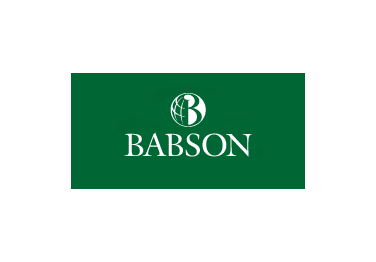The newly formed Tech South East, an organization aimed at growing the technology and health and life science sectors, unveiled its mission yesterday in a kickoff at the Capitol Theatre.
Doug Robertson, president and CEO, was on hand to officially launch
the opening of Tech South East yesterday at the Capitol Theatre.
The organization, with
Doug Robertson at the helm as president and CEO and Jon Manship of
Technology Venture Corporation chairing the board of directors, grew out
of the Moncton Technology Planning Group, created in 2004 by community
leaders representing technology-based business, institutional research,
venture capital and local government.
Partnerships with the IC2
group in Austin, Texas and the City of Oulu, Finland led to research in
how communities can grow innovation through establishing a common
vision, and that and other work ultimately led to yesterday's event, at
which broad support from various community leaders was obvious, given
the attendance of close to 200 people from various interested parties.
These
strategic partners include the Province of New Brunswick, which has
contributed $331,000 to the organization, it was announced by Premier
Shawn Graham at yesterday's ceremony.
RICH BENDIS PRESIDENT AND CEO OF INNOVATION AMERICA, CONGRATULATES DOUG ROBERTSON AND THE TECH SOUTH EAST TEAM ON THIS MILESTONE EVENT AND WISHES THEM MUCH SUCCESS AS THE NEW INNOVATION INTERMEDIARY FOR THIS GROWING REGION IN NEW BRUNSWICK, CANADA.
 Conventional wisdom says that private
equity investors should place primary
importance on the management team. For angel investors, future
financing risk is also a critical consideration. Here’s why:
Conventional wisdom says that private
equity investors should place primary
importance on the management team. For angel investors, future
financing risk is also a critical consideration. Here’s why:
 Gathered around a large, sun-drenched table in the SoMa neighborhood
of San Francisco on a Friday afternoon are financial advisers,
activists, marketers, designers, coders, lawyers, and a half-dozen more
local entrepreneurs. There are representatives from the microlending
empire Kiva, social justice organization
MercyCorps, and a solar-energy company based in India. At the table's
head is
Gathered around a large, sun-drenched table in the SoMa neighborhood
of San Francisco on a Friday afternoon are financial advisers,
activists, marketers, designers, coders, lawyers, and a half-dozen more
local entrepreneurs. There are representatives from the microlending
empire Kiva, social justice organization
MercyCorps, and a solar-energy company based in India. At the table's
head is  Who is an entrepreneur really?
Who is an entrepreneur really?
 Last week Anita Campbell let us know about what happened at National Small Business Week and the Small Business Administration’s focus on the “3 C’s”: capital, contracts and counseling. There was so much said about the first “C”, capital, I thought it was worth a deeper look.
Last week Anita Campbell let us know about what happened at National Small Business Week and the Small Business Administration’s focus on the “3 C’s”: capital, contracts and counseling. There was so much said about the first “C”, capital, I thought it was worth a deeper look. VCs are on the hunt, and it doesn’t matter if a company is in Boston, Beijing, or Menlo Park, they’re looking to fund great ideas anywhere in the world. Some are even opening offices overseas in an effort to find the next big international thing.
VCs are on the hunt, and it doesn’t matter if a company is in Boston, Beijing, or Menlo Park, they’re looking to fund great ideas anywhere in the world. Some are even opening offices overseas in an effort to find the next big international thing.  (CNN) -- Looking for a job?
(CNN) -- Looking for a job? Researchers at an Australian university have developed the first dipstick-type test to determine blood type. The test involves putting a drop of blood onto a thin piece of paper that has been specially printed with antibodies; as the blood seeps into different parts of the paper, the blood type is revealed. The researchers say the test, which costs pennies, could improve medical treatments in the developing world.
Researchers at an Australian university have developed the first dipstick-type test to determine blood type. The test involves putting a drop of blood onto a thin piece of paper that has been specially printed with antibodies; as the blood seeps into different parts of the paper, the blood type is revealed. The researchers say the test, which costs pennies, could improve medical treatments in the developing world. If you have a son or daughter graduating from college this year, you’ve probably gotten the word. When meeting this year’s college grads it’s best not to ask: “Hey, what are you doing next year?” Too many recent graduates don’t have an answer. They can’t find jobs even remotely related to their fields. This year’s graduation theme is: “Don’t ask. Can’t say.”
If you have a son or daughter graduating from college this year, you’ve probably gotten the word. When meeting this year’s college grads it’s best not to ask: “Hey, what are you doing next year?” Too many recent graduates don’t have an answer. They can’t find jobs even remotely related to their fields. This year’s graduation theme is: “Don’t ask. Can’t say.”

 The Massachusetts-based nonprofit MassChallenge has launched the world's largest global startup competition, with $1 million in no-strings-attached prize money for the winning entrants.
The Massachusetts-based nonprofit MassChallenge has launched the world's largest global startup competition, with $1 million in no-strings-attached prize money for the winning entrants.
 Leading at Light Speed is a new leadership book by Eric Douglas detailing the 10 Quantum Leaps to build trust, spark innovation, and create a high-performing organization.
Leading at Light Speed is a new leadership book by Eric Douglas detailing the 10 Quantum Leaps to build trust, spark innovation, and create a high-performing organization. How pleasurable and desirable does this image of chocolate cake appear to you?
How pleasurable and desirable does this image of chocolate cake appear to you? The Australian government has announced that the country's largest
energy supplier and retailer,
The Australian government has announced that the country's largest
energy supplier and retailer, 
 Fifteen teams of Babson College students and recent alums are spending ten intensive weeks of their summer vacation taking part in Babson’s Summer Venture Program to strategize, shape and accelerate their entrepreneurial businesses. Eighty-one teams applied to the program.
Fifteen teams of Babson College students and recent alums are spending ten intensive weeks of their summer vacation taking part in Babson’s Summer Venture Program to strategize, shape and accelerate their entrepreneurial businesses. Eighty-one teams applied to the program.